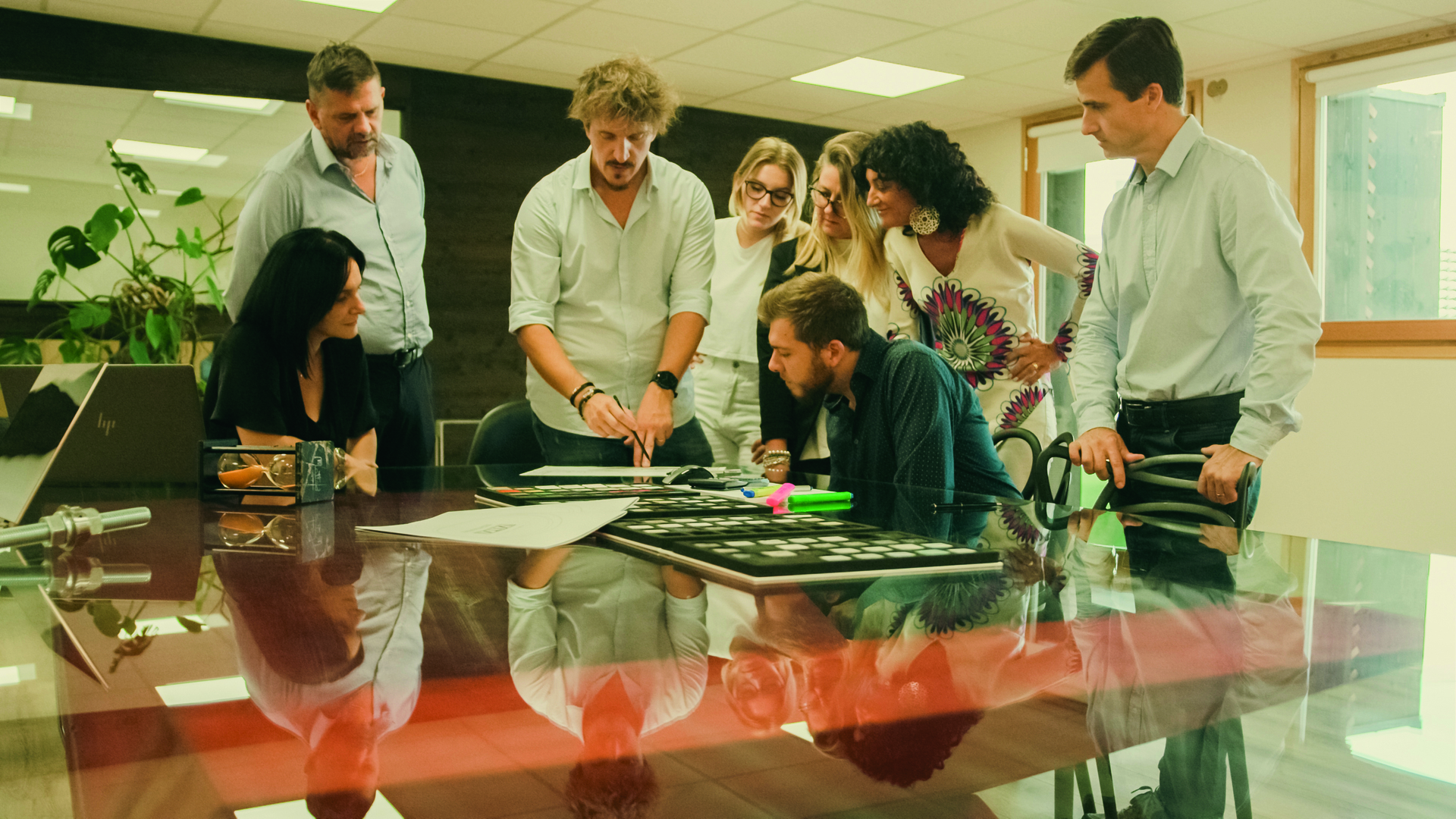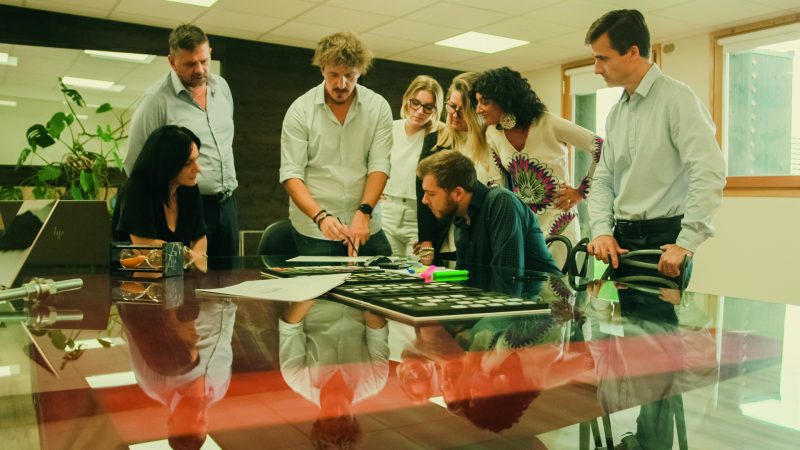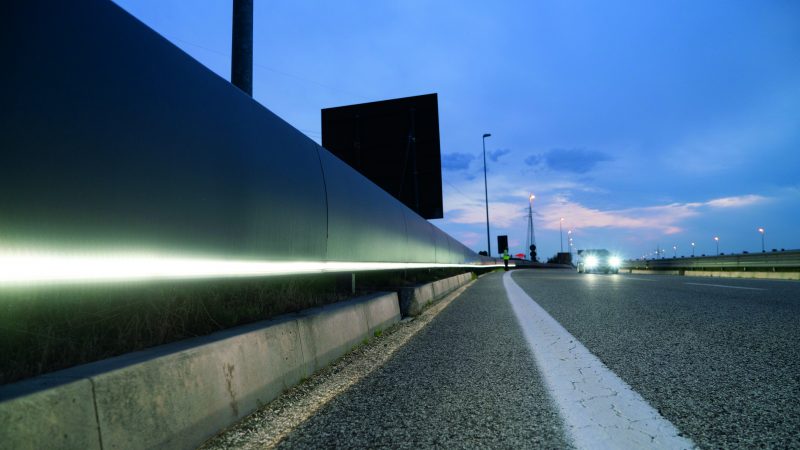Strade più sicure, illuminate e sostenibili: così Vita International vuole rivoluzionare la mobilità

SUITEAI
Articolo tratto dal numero di febbraio 2022 di Forbes Italia. Abbonati!
Ha raggiunto un importante livello di prestigio facendo coesistere sistemi di sicurezza viaria con un impatto ambientale minimo. Vita International commercializza prodotti ad alto tasso di innovazione, grazie alla guida dell’amministratrice Irina Mella Burlacu, agli investimenti in r&s e a un team valido.
Nata sette anni fa e leader nel settore delle barriere stradali di sicurezza in legno e acciaio, Vita International è sinonimo di sicurezza e professionalità. Oggi, giunta alla seconda generazione, l’azienda progetta, produce e commercializza i suoi prodotti con una missione: far coesistere armoniosamente sistemi di safety viaria e sostenibilità ambientale. Le sue soluzioni, dunque, non sono semplici accessori, ma puntano anche a diventare protagonisti di stile, landmark estetici, simboli di sicurezza ma anche di alta qualità. Il legno e l’acciaio impiegati nei processi produttivi inoltre sono completamente riciclabili, a conferma di un approccio di piena economia circolare. “Le barriere in legno-acciaio si sono fatte strada e sono entrate ufficialmente nel mercato mondiale, ma tra tutti i concorrenti internazionali è Vita International a possedere l’unico certificato Ce con una barriera spartitraffico in legno-acciaio”, dichiara Irina Mella Burlacu, amministratrice dell’azienda.
Vita International vanta partner in tutta Europa e le sue barriere sono state prodotte anche in Cile, all’interno di un progetto di sviluppo innovativo che vede l’azienda bresciana in partnership con Tecnovial, operatore locale che condivide con Irina Mella Burlacu i valori della qualità e della sostenibilità. Tra le partnership più recenti anche quella in Francia, dove l’azienda Solosar è diventata distributore ufficiale per il territorio transalpino delle barriere italiane, potenziando una gamma già votata alla qualità.
Da una costola di Vita International è nata inoltre un’altra società, Roadlink, che produce il GuardLed, la barriera che illumina la strada. Si tratta sostanzialmente di un nuovo modo di illuminare le corsie di strade e autostrade, nonché una risposta tecnica al problema dell’inquinamento luminoso. Uno strumento che ha suscitato l’apprezzamento di moltissimi gestori di strade e che è stato annoverato tra i prodotti più innovativi del 2020. Tra le invenzioni e i prodotti dell’azienda bresciana anche Draco, una rondella che si applica ai guardrail o ai pannelli fonoassorbenti delle autostrade con dei sensori che le permettono di capire se è successo qualcosa alla struttura sottostante, cioè al calcestruzzo.

Guardled, una nuova luce dalle barriere
La sicurezza non è garantita dalla maggiore illuminazione, ma dalla migliore illuminazione. Il che significa che questa deve essere costante e ben distribuita, e non deve creare una forte differenza tra le zone di luce e d’ombra. Se la (buona) luce è sinonimo di sicurezza, la medesima buona luce può portare con sé, tuttavia, anche ulteriori benefici in termini, per esempio, di tutela ambientale. È in questo contesto che fa la sua parte una tecnologia come i Led, uno dei ‘pilastri’ della soluzione RoadLink: la luce bianca delle “strip” di GuardLed, unitamente a una progettazione che ha studiato accuratamente il target d’irraggiamento (per esempio ritenendo ottimale un’altezza di collocazione del dispositivo a 0,4 m), contribuisce infatti alla riduzione dell’inquinamento luminoso. Led toccasana, dunque, sotto molteplici aspetti. Utilizzando questo genere di illuminazione, per esempio, è possibile ottenere un risparmio energetico che va dal 50 all’80%.
Il sistema di illuminazione a Led, realizzato da Roadlink, per l’installazione su barriere stradali esistenti si chiama G-light, ed è stato proposto e installato per migliorare l’illuminazione delle aree di transito, con notevoli benefici non solo sul piano della sicurezza stradale, ma anche su quello della sostenibilità ambientale. G-Light (tecnologia Guardled), da parte sua, si distingue anche per un’invidiabile versatilità: è installabile sia su barriere fisse, in acciaio (come a Casalecchio) e New Jersey, ma anche in legno (un esempio da manuale si trova nel centro di Monza) sia temporanee tipo Mini-Guard, senza mai influenzarne il funzionamento e le prestazioni. Il sistema si compone di guaina estrusa in Pvc (personalizzabile), strip Led, sigillatura con guaina di silicone, cavi interni che garantiscono un’alimentazione a linea continua in serie ottica asimmetrica stradale Khatod GuardLed e connettori. Tra i suoi punti di forza: installazione semplice su dotazioni esistenti, eliminazione di punti singolari di illuminazione a favore di una soluzione continua a beneficio di utenti e operatori, visibilità migliorata lato traffico, risparmio energetico e significativa riduzione dell’inquinamento luminoso, costi di gestione ridotti anche in virtù dell’adozione di materiali performanti e durevoli.
La bellezza che protegge dalle barriere in legno e acciaio
La gamma di barriere in legno e acciaio che offre Vita International comprende bordo laterale, bordo ponte e spartitraffico, disponibili a doppia o tripla onda e con montanti posti a differenti interassi. I livelli di contenimento e di severità (Asi) che vengono garantiti sono ottenuti con le prove TB32, TB42 e TB51 diversificate a seconda del tipo di veicolo, velocità e angolo d’impatto. Le barriere sono costituite da una struttura portante in acciaio Corten, nome derivante dalle sue principali proprietà costruttive: “CORrosion resistance” (resistenza alla corrosione) e “TENsile strenght” (resistenza alla trazione). Questo materiale, con il processo di ossidazione, crea una patina formata da uno strato poroso (esternamente) e da una sottile pellicola di rame, cromo e fosforo (internamente) che lo rendono impermeabile e gli conferiscono il suo distintivo colore rosso-bruno. Queste caratteristiche, unite agli aspetti economici dovuti alla possibilità di ridurne notevolmente gli spessori, lo differenziano e lo posizionano avanti al tradizionale acciaio al carbonio. Il rivestimento prevede invece due tipologie di legno: legno massello (naturale, segnato dal tempo, eterno) e legno lamellare (simbolo di modernità, arredo, e perfezione). Il primo composto da semipali in Pino Silvestre, opportunamente sagomati e trattati in autoclave per resistere agli agenti atmosferici e inquinanti; il secondo costituito da travi in Abete Rosso opportunamente sagomate e impregnate in linea.
Le barriere sono state pensate appositamente per essere funzionali e studiate con un’attenzione particolare alla posa in opera, e quindi cercando di rendere più semplici possibili le fasi di montaggio. La peculiarità della gamma di barriere Vita International sta nel fatto che è certificata sia in acciaio Corten che in acciaio Corten con rivestimento in legno delle parti metalliche. Cosa vuol dire questo? Significa dare la possibilità di applicare o rimuovere il legno alla struttura in Corten, senza escludere sicurezza, durabilità e valore estetico del prodotto.
Andando nel concreto, se un ente deve installare una barriera e non è in possesso di fondi per permettersi l’investimento, ad esempio, può in un primo momento installare la barriera in solo acciaio Corten e successivamente applicare il legno. Un’altra situazione che può verificarsi è che, a seguito di una scarsa manutenzione o di un grave incidente, il legno applicato alla barriera si deteriori o danneggi e quindi necessiti una sostituzione. L’ente o il cliente può decidere di sostituire il rivestimento oppure di tenere la barriera ‘nuda’ dal legno. Ecco perché possiamo parlare di una ‘doppia vita’ per le barriere di Vita International.

Una rondella per la sicurezza dei viadotti
Come se fossimo dentro un film, un rapido movimento di macchina ci porterebbe a ‘zoomare’ su un tirafondo, ovvero la piastra con barra filettata a cui generalmente si àncora la fondazione, per esempio, di una barriera integrata sicurezza-antirumore (ma anche di una normale barriera acustica, così come un portale per pannelli a messaggio variabile o di una recinzione su rampa di svincolo). Qui, nella filettatura esistente, proprio sotto la coppia dei dadi di serraggio diventa oggi collocabile una rondella strumentata, ovvero un dispositivo molto discreto e smart contenente un sensore a sua volta collegato a una scheda elettronica per la trasmissione dati che utilizza una banda dedicata. Il suo compito: misurare le deformazioni indotte dalla forza di compressione generata dal serraggio dei dadi del tirafondo stesso. In altri termini: quel punto singolare della nostra rete stradale – da cui dipende la stabilità di una dotazione-chiave quale una barriera integrata oppure un portale o una rete protettiva – diventa controllabile, non solo tramite ispezione visiva dedicata, come avvenuto finora, ma totalmente in automatico e h24. Tutto questo grazie a una piccola ‘manutentrice digitale’ che si prende cura della buona forma dei dadi di giorno e di notte e fornisce, via Internet, un minuzioso andamento, nel tempo, del comportamento di tenuta dei medesimi – il trend, insomma – utile a prevedere se quel determinato punto meriti un approfondimento ulteriore o se magari sussista qualche problematica da gestire e, naturalmente, risolvere. Andando dunque a colpo sicuro. La ‘mamma’ di questa geniale rondella strumentata è proprio Vita International. Il suo ‘padre’ invece Ezio Giuffré, tecnico di lunga esperienza nel campo dell’innovazione infrastrutturale.
English version
For safer, more illuminated and more sustainable roads
Vita International has achieved a high degree of prestige by creating road safety systems with a minimum environmental impact. Under the leadership of its ceo, Irina Mella Burlacu, and a valuable management team, the company sells products with a high innovation rate and invests in r&d.
Founded seven years ago in Brescia (Italy), Vita International is a leder in the wood and steel safety barrier industry, and has become a synonym of quality and professionalism. Today, at its second-generation, the company designs, manufactures and markets its products with a mission: to harmoniously combine road safety and environmental sustainability systems. Vita International’s solutions are not mere accessories, but aim to be veritable style elements, aesthetic landmarks, and symbols of safety and high quality. The wood and steel used in production processes are completely recyclable, for a fully circular economy approach. “Wood-steel barriers have made their way in the global market, but, of all international competitors, Vita International is the only company that has CE certified wood and steel road safety barriers” – said Irina Mella Burlacu, the company’s ceo.
Vita International has partners throughout Europe and its barriers have also been produced in Chile, within an innovative development project where the Italian company (based in the city of Brescia) has partnered with Tecnovial, a local operator who shares quality and sustainability values with Irina Mella Burlacu. The most recent partnerships also include the one in France, where the company Solosar has become the official distributor of Italian safety barriers for the transalpine territory, thus enhancing a range already devoted to quality.
With a spin-off, Vita International created another entity called Roadlink, which produces GuardLed – a barrier that also illuminates the road. Essentially a new way of illuminating the lanes of roads and motorways, the GuardLed is also a technical response to the problem of light pollution. Much appreciated by road operators, this solution has been listed among the most innovative products of 2020. The inventions and products created by Vita International also include Draco, a washer that can be fixed to the guardrails or sound absorbing panels of highways to sense (with sensors) any problem that might affect the underlying concrete structure.
Guardled, the new light coming from safety barriers
Safety is not ensured by more lighting, but by better lighting. This means that light should be constant, well distributed, and avoid high contrast between light and shadow areas. While (good) lighting is a synonymous of safety, the same good light may also bring further benefits in terms of, for example, environmental protection. This is where the led technology – one of the pillars of the RoadLink solution – plays its role: the white light of the GuardLed strips, combined with a carefully studied design based on target radiation (e.g., determination of 0.4 metres as the best device placement height), contributes to the reduction of light pollution. We could call them environment-friendly leds, under many respects. By using this kind of lighting, for example, energy savings between 50% and 80% can be achieved.
The led lighting system created by Roadlink for installation on existing road safety barriers is called G-Light. It has been proposed and installed to improve lighting in transit areas, with considerable benefits not only in terms of road safety, but also in terms of environmental sustainability. G-Light (Guardled technology) also stands out for its excellent versatility: it can be installed both on fixed, steel safety barriers (as in Casalecchio, near Bologna) and on Jersey bumps, but also on wood (an excellent example is visible in the centre of Monza) and on temporary Mini-Guard type barriers, without ever affecting its operation and performance. The system consists of (customizable) extruded Pvc sheath, led strips, silicone sheath sealing, internal cables ensuring continuous line supply with Khatod GuardLed street asymmetric optics series and connectors. The strengths of this solution are: easy installation on existing equipment; elimination of single lighting points, which are replaced by a continuous lighting solution for the benefit of users and operators; improved traffic side visibility; energy savings and significant reduction of light pollution; reduced management costs, also thanks to the use of highly-performing and durable materials.
Wood and steel barriers: beauty that protects
The range of wood and steel road safety barriers offered by Vita International includes side edge, deck edge and traffic dividers, available in double or triple wave design, with uprights located at different distances. The guaranteed containment and severity levels (Asi) are obtained with TB32, TB42 and TB51 tests, diversified according to vehicle type, speed and angle of impact. The barriers consist of a Corten steel load-bearing structure – the name “Corten” derives from the main construction properties of steel: CORrosion resistance and TENsile strenght. With the oxidation process, this material creates a coating consisting of a porous layer (externally) and a thin film of copper, chromium and phosphorus (internally), which make it waterproof and give it a distinctive red-brown colour. These characteristics, together with the economic benefits offered by the possibility to considerably reduce thickness, make it a different product that can be positioned ahead of traditional carbon steel. The coating is provided with two types of wood: solid wood (naturally aged, eternal) and laminated wood (a symbol of modernity, furnishing, and perfection). While the former is composed of Scots Pine half poles, appropriately shaped and autoclaved to resist atmospheric and polluting agents, the latter is made up of suitably shaped and in-line impregnated red fir beams.
The barriers have been specially designed to be functional, with special care being used to their installation with the purpose of making their assembly steps as easy as possible. The peculiarity of the Vita International range of barriers is that both the Corten steel and the Corten steel with wood coated metal parts versions have been certified. What does this mean? It means that the wood coating can be applied to or removed from the Corten steel structure without reducing the safety, durability and aesthetic value of the product.
Concretely speaking, if an entity has to install a barrier and has no funds to afford the whole investment, they can – for example – install only the Corten steel barrier initially, and then apply the wood later. Another possible situation is that the wood applied to the barrier has deteriorated or has been damaged due to poor maintenance or a serious accident, and needs to be replaced. The entity or the client may only replace the wood coating or keep the “naked” barrier (without the wood). That is why we can talk of a ‘double life’ for Vita International’s road safety barriers.
A washer for safe viaducts
Imagine a rapid movement of the camera in a film zooming on an anchor bolt – the threaded bar plate to which foundations are generally anchored, let’s say, in an integrated safety-noise barrier, but also in a normal acoustic barrier, or in a variable-message sign gate or in a fence on a junction ramp. Today, an instrumented washer can be installed in the existing thread, just under the pair of clamping nuts, to provide a very discreet and smart device that contains a sensor connected to an electronic circuit for data transmission, which uses a dedicated band. Its task is to measure the deformation induced by the compression force generated by the tightening of the nuts of the anchor bolt. In other words, that single point in our road network, on which the stability of key equipment such as an integrated barrier or a gate or a protective network depends, is now controllable not only through a dedicated visual inspection, as it has been so far, but through a completely automated 24-hour monitoring system. All this is feasible thanks to a small “digital maintainer” that takes care of the good shape of the nuts, day and night, and provides (via Internet) a detailed time trend of their holding behaviour. This trend can then be used to predict any need for a further inspection of that specific point or to evaluate any possible problem to be managed and, of course, resolved. Straight to the point. The ‘mother’ of such a clever instrumented washer is Vita International. Its ‘father’ is Ezio Giuffré, experienced infrastructure innovation engineer.






